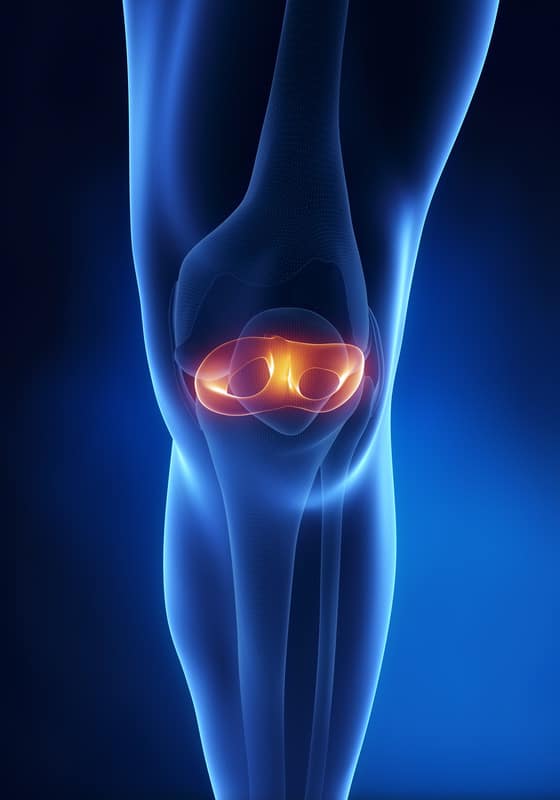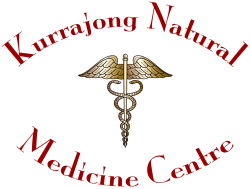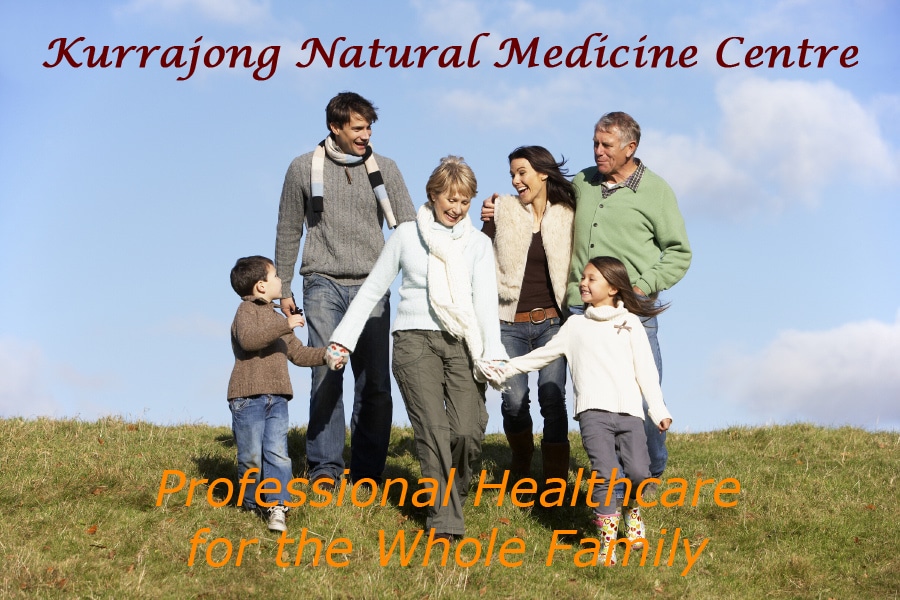Osteoarthritis of the Knee - A Chinese Medicine Perspective
What is Osteoarthritis of the Knee
Osteoarthritis, the most common form of arthritis, is a progressive degenerative disease characterised by gradual loss of joint cartilage, resulting in loss of movement and pain. It is the leading cause of disability among non-institutionalized adults, and is associated with major impacts on physical function and mobility.
Osteoarthritis is a commonly seen condition both by orthodox medical practitioners as well as practitioners of Chinese medicine and Acupuncture. It occurs in 80% of people aged over 65 [1] and is characterised by symptoms such as joint cartilage loss, restriction of movement, pain, crepitus and joint swelling [1, 2].
Conventional methods of treatment comprises the use of NSAIDs (non-steroidal anti-inflammatories), analgesic pharmaceutical drugs, muscle strengthening exercises and weight loss with limited positive results and in some causing adverse side-effects [2].
Acupuncture has been show to be a safe and highly effective method in treating symptoms associated with Knee Osteoarthritis (KOA) including the repair of cartilage [2,4,5,6] within the knee joint itself.Acupuncture has been practiced for well over 3000 years and there is evidence that it may have been used to treat arthritis as far back as 5000 years ago. The mummified man Ötzi, estimated to have lived 5300 years ago, was found in the Austrian/Italian alps in 1991. Tattoo like marks found on his body correspond to acupuncture points that would have been used to treat the arthritis in his back, hip joints, right knee and left ankle [7].

The points found by the researches represent a meaningful treatment for arthritis even in today’s acupuncture clinics. In fact, at Kurrajong Natural Medicine Centre, we would use most of these points on a daily bases when treating patients with arthritis of this type.
How Does Traditional Chinese Medicine (TCM) view Osteoarthritis
Osteoarthritis in Chinese medicine is classified as “Painful Obstruction Syndrome”. And as the knees are influenced by the Kidney energy, it is important to differentiate knee pain due to Kidney deficiency from that due to Painful Obstruction Syndrome (POS). When pain in the knee(s) is due to Kidney deficiency, the knee pain is usually in both knees and develops gradually over a long time. Furthermore, the knees feel weak and possibly cold, especially if Kidney-Yang is deficient. This type of knee pain is not affected by weather and the knees would not be swollen.
When the knee pain is due to invasion of pathogenic factors, the knee pain is more often one-sided and it starts fairly suddenly It is definitely affected by weather, usually worsening with rainy or damp weather, and the knee may be swollen which indicates retention of Dampness.
Painful Obstruction Syndrome of the knee often occurs from a combination of factors, i.e.: an invasion of exterior Cold and Damp and a previous local stagnation of Qi (body’s bio-electricity) due to an old injury.
Acupuncture has been show to be a safe and highly effective method in treating symptoms associated with Knee Osteoarthritis (KOA) including the repair of cartilage [2,3,4,5] within the knee joint itself [3].
Osteoarthritis (OA) is unfortunately not curable using conventional treatment methods, however, it is manageable and the condition can improve to some degree depending on how advanced the arthritis is before treatment can begin, the age of the patient and their overall physical constitution and health.
Acupuncture is reported to be more effective in the treatment of OA than conventional methods and physiotherapy and unlike physiotherapy it has been shown to regenerate cartilage in the knee joint to some degree [8].
In TCM clinics like Kurrajong Natural Medicine Centre, arthritis is a commonly seen presentation. Fortunately, acupuncture and Chinese herbal medicine have been shown to help many people to better manage this condition. To discuss how the practitioner at Kurrajong Natural Medicine Centre may be able to help, simply call (02) 4573 0784
What You Can Do to Help Yourself
The Arthritis Foundation of America suggests the following:
Practicing these habits can slow down OA, keep you healthy and put off surgery as long as possible.
- Maintain a Healthy Weight: Excess weight worsens OA. Combine healthy eating with regular exercise to maintain a healthy weight.
- Control Blood Sugar: Many people have diabetes and OA. Having high glucose levels can make cartilage stiffer and more likely to break down. Having diabetes causes inflammation, which also weakens cartilage.
- Maintain Range of Motion: Movement is medicine for joints. Make a habit of putting your joints through their full range of motion, but only up to the point where it doesn’t cause more pain. Gentle stretching, raising and lowering legs from a standing or seated position, daily walks and hobbies such as gardening can help. But listen to your body and never push too hard.
- Protect Joints: Make sure to warm up and cool down when doing exercise. If you play sports, protects joints with the right gear. Use your largest, strongest joints for lifting, pushing, pulling and carrying. Watch your step to prevent falls. Balance rest and activity throughout the day.
- Relax: Find ways to reduce or avoid stress through meditation, listening to music, connecting with friends and family, doing fun activities, and finding ways to relax and recharge.
- Choose a Healthy Lifestyle: Eating healthy food, not smoking, drinking in moderation and getting good sleep will help you to feel your best.
References:
1. Selfe, T. K., & Taylor, A. G. (2008). Acupuncture and osteoarthritis of the knee: a review of randomized, controlled trials. Family & community health, 31(3), 247–254. doi:10.1097/01.FCH.0000324482.78577.0f
2. Taru Manyanga, Maria Froese, Ryan Zarychanski, Ahmed Abou-Setta, Carol Friesen, Michael Tennenhouse and Barbara L Shay. Pain management with acupuncture in osteoarthritis: a systematic review and meta-analysis. BMC Complementary and Alternative Medicine. 2014; 14-312
3. Marciocia, G. (1994) The Practice of Chinese Medicine: The Treatment of Disease with Acupuncture and Chinese Herbs, Edinburgh: Elsevier Churchill Livingstone.
4. Corbett MS, Rice SJ, Madurasinghe V, Slack R, Fayter DA, Harden M, et al. Acupuncture and other physical treatments for the relief of pain due to osteoarthritis of the knee: network meta-analysis. Osteoarthritis Cartilage. 2013 Sep;21(9):1290-8.
5. Manyanga T, Froese M, Zarychanski R, Abou-Setta A, Friesen C, Tennenhouse M, et al. Pain management with acupuncture in osteoarthritis: a systematic review and meta-analysis. BMC Complement Altern Med. 2014;14:312.
6. McDonald J, Janz S. The Acupuncture Evidence Project: A Comparative Literature Review (Revised edition). Australian Acupuncture and Chinese Medicine Association Ltd; 2017. http://www.acupuncture.org.au.
7. Ice Age Acupuncture? Acupuncture Today – June, 2000, Vol. 01, Issue 06. https://www.acupuncturetoday.com/mpacms/at/article.php?id=27608
8. Zhang, Y., Bao, F., Wang, Y., & Wu, Z. (2016). Influence of acupuncture in treatment of knee osteoarthritis and cartilage repairing. American journal of translational research, 8(9), 3995–4002.
9. Arthritis Foundation of America. https://www.arthritis.org/diseases/osteoarthritis last visited 1st Jul. 2021
Disclaimer
Disclaimer information for users of the Kurrajong Natural Medicine Centre website.
Page last updated: 24th June 2021
THE INFORMATION PROVIDED IN ANY OF THE ARTICLES PUBLISHED ON THIS SITE IS FOR EDUCATION AND INFORMATION PURPOSES ONLY.
NO CLAIMS ARE MADE AS TO THE EFFECTIVENESS OF ANY OF THE TREATMENTS USING ACUPUNCTURE OR THAT THIS THERAPY IS SUITABLE FOR THE READER.
THE SOURCES OF ALL THE ARTICLES ARE LISTED AND COME FROM REPUTABLE PEER-REVIEWED SCIENTIFIC JOURNALS. WHERE POSSIBLE LINKS TO THE ORIGINAL SOURCE ARE PROVIDED FOR THE READER TO FOLLOW.
Articles published on this page are not intended to provide diagnosis, treatment or medical advice. Content provided on this page is for informational purposes only. Please consult with a physician or other healthcare professional regarding any medical or health related diagnosis or treatment options. Information on this page should not be considered as a substitute for advice from a healthcare professional. The claims made about specific products throughout this article are not approved to diagnose, treat, cure or prevent disease.
Information provided for education and research information only
The information on this website is presented by Kurrajong Natural Medicine Centre for the purpose of disseminating health information free of charge for the benefit of the public.
While Kurrajong Natural Medicine Centre has exercised due care in ensuring the accuracy of the material contained on this website, the information on the site is made available on the basis that Kurrajong Natural Medicine Centre is not providing professional advice on a particular matter.
This website is not a substitute for independent professional advice. Nothing contained in this site is intended to be used as medical advice and it is not intended to be used to diagnose, treat, cure or prevent any disease, nor should it be used for therapeutic purposes or as a substitute for your own health professional’s advice.
Kurrajong Natural Medicine Centre does not accept any liability for any injury, loss or damage incurred by use of or reliance on the information provided on this website.
Quality of information
Kurrajong Natural Medicine Centre makes every effort to ensure the quality of the information available on this website and updates the information regularly. Before relying on the information on this site, however, users should carefully evaluate its accuracy, currency, completeness and relevance for their purposes, and should obtain any appropriate professional advice relevant to their particular circumstances. Kurrajong Natural Medicine Centre cannot guarantee and assumes no legal liability or responsibility for the accuracy, currency, completeness or interpretation of the information.
The material may include the views or recommendations of third parties and does not necessarily reflect the views of Kurrajong Natural Medicine Centre or indicate a commitment to a particular course of action.
Links to other websites
This website contains links to other websites which are external to Kurrajong Natural Medicine Centre. Kurrajong Natural Medicine Centre takes reasonable care in selecting linking websites but Kurrajong Natural Medicine Centre accepts no responsibility for material contained in a website that is linked to this site. It is the responsibility of the user to make their own decisions about the accuracy, currency, reliability and correctness of information contained in linked external websites.
Links to external websites are provided for the user’s convenience and do not constitute an endorsement or a recommendation of any third party products or services offered by virtue of any information, material or content linked from or to this site. Users of links provided by this site are responsible for being aware of which organisation is hosting the site they visit.
Views or recommendations provided in linked sites may include the views or recommendations of third parties and do not necessarily reflect those of Kurrajong Natural Medicine Centre or indicate a commitment to a particular course of action. .



